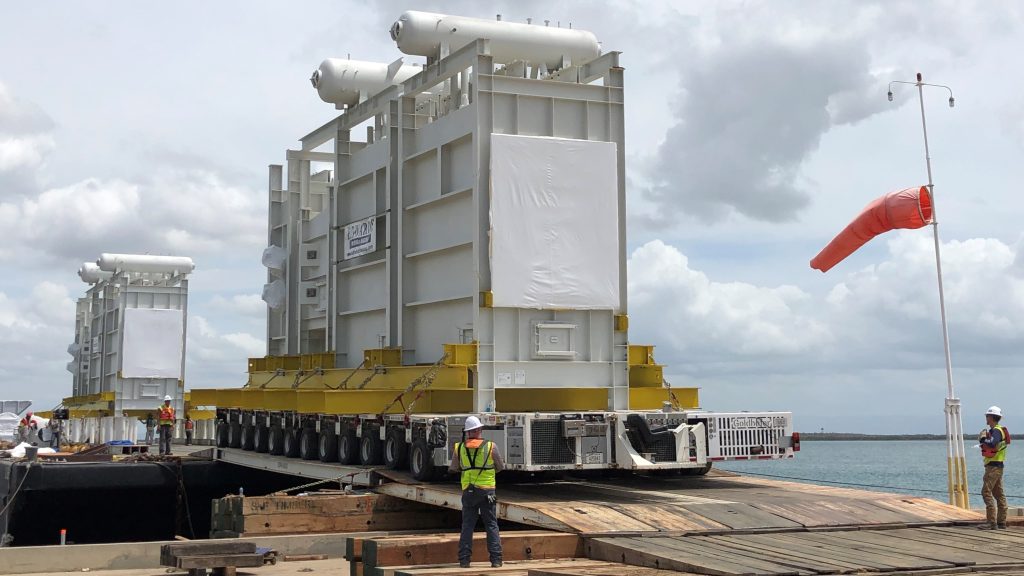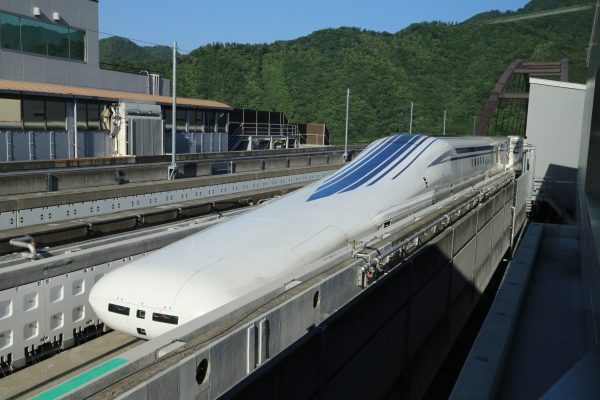By Danny Villafane, P.E., CEM, M.SAME, and Mark Keels, P.E., CEM
Naval Station Guantanamo Bay achieved energy self-sufficiency through a record-setting energy savings performance contract that enabled construction of a state-of-the-art combined cycle power plant.

Military commanders understand the inherent advantages of an island energy strategy, which involves reducing reliance on external energy resources to fulfill critical missions and building redundancy to overcome isolated outages. However, when the mission is situated on an island, as is the case at Naval Station Guantanamo Bay, Cuba, energy independence and resilience are not merely desired goals or tactical advantages—they are, in fact, a necessity.
The story of Guantanamo Bay’s energy self-sufficiency begins in the early 1960s. After the Cuban Revolution and the subsequent deterioration of relations between the United States and Cuba, the naval base became isolated from mainland supplies, including water and energy resources. To adapt and ensure operational continuity, the U.S. Navy had to take matters into its own hands.
For the last several decades, Guantanamo Bay generated its primary power through a mix of 15 diesel generators of various capacity ratings, including Mobile Utility Support Equipment; four 950-kW wind turbines; and a limited utility-grade solar photovoltaic system to meet peak electrical power requirements. Since the turn of the century, however, the focus has shifted from these legacy systems toward finding a cleaner, more reliable, and more affordable, energy future.
This innovative facility not only has a smaller carbon footprint but provides an affordable, reliable, and resilient power source for 30 tenant commands and 6,000-person base population.
Seeking Resiliency
Recently, a new state-of-the-art power combined cycle power plant was unveiled at Naval Station Guantanamo Bay, delivered through a collaborative partnership with the Naval Facilities Engineering & Expeditionary Warfare Center (NAVFAC EXWC) and NAVFAC Southeast. This innovative facility not only has a smaller carbon footprint but provides an affordable, reliable, and resilient power source for 30 tenant commands and 6,000-person base population.
The end of FY2023 held great significance for NAVFAC Southeast as it marked the successful culmination of a four-year energy savings performance contract (ESPC), awarded in July 2019, that aimed to achieve the milestone of constructing the Defense Department’s first combined cycle power plant fueled by natural gas. An ESPC involves the contracted company financing costs of construction, which are then repaid over the life of the contract using generated savings.
In support of this endeavor, a liquefied natural gas facility was meticulously constructed to receive, store, and re-gasify liquefied natural gas, catering to the needs of the power plant’s two gas engine generators, two turbine generators, and its steam turbine generator. Additionally, to bolster the base’s electrical power resilience, a 12-MW photovoltaic system, complemented by a Battery Energy Storage System, was integrated. As added redundancy, Naval Station Guantanamo Bay retained its existing diesel power plant generators to furnish electricity during outages or to augment power during surge events.
Engaging Industry
In 2015, NAVFAC Southeast had begun this energy system makeover by hosting a site visit to Guantanamo Bay involving multiple energy savings companies to initiate scoping for the ESPC. Following a thorough review of proposals, NAVFAC EXWC awarded Siemens Government Technologies an $828 million multiple-award indefinite-delivery/indefinite-quantity ESPC, the largest in Navy history.

Innovative Approach. Research from the contracting team had yielded an economical and secure answer for the facility’s needs—a natural gas solution that would be a first-of-its-kind procurement for the Defense Logistics Agency. Today, Naval Station Guantanamo Bay receives an offload of liquefied natural gas every two to three weeks. In the unlikely scenario that the fuel is not available to the base, the power plant can be fired by diesel fuel. Beyond conventional methods, photovoltaic arrays generating 20-GWh annually, combined with a battery energy storage system, enhance grid resiliency.
Efficient grid control is enabled by an intelligent energy management system, powered by a microgrid management system, which allows for real-time cost determination. Key features include a rules-based approach to ensure continuous machinery availability, an operating reserve for contingencies, and adaptability to weather conditions for proactive power-generation planning.
Energy, Secured
The Guantanamo ESPC project supports the Navy’s three pillars of energy security: resiliency, reliability, and efficiency. Annual sustainability savings include a reduction of nearly 4-million-BTUs and almost 1-million-gal of water.
The new plant is more beneficial for the environment and demonstrates the Navy’s commitment to reducing the carbon footprint of its installations. A total of 17 percent of the power generated by the new plant uses renewable sources of energy. In total, the project will decrease annual installation energy fuel consumption by about 27 percent. This is equivalent to nearly a full percentage point decrease in facility energy consumption for the entire Navy, and is designed to reduce carbon emissions by more than 20,000-T.
In addition to the power generation facility, five more projects encompassed by this ESPC have already been finalized. These include a 1.73-MW photovoltaic system facility; a 12-MW grid-connected photovoltaic system with energy storage; enhancements to interior and exterior lighting in 118 buildings; upgrades to water fixtures in 64 buildings; and improvements to water and wastewater systems in three different locations.
Cleaner Resource. Despite being the largest liquified natural gas procurement to date within the Defense Department, the contract will yield approximately $9 million in annual fuel cost savings compared to using diesel fuel. Liquified natural gas burns cleaner than diesel fuel, producing lower emissions of sulfur, nitrogen, and carbon dioxide.

The power plant, storage facility, solar photovoltaic arrays, energy storage, efficient lighting, cooling, refrigeration, and improved controls and water conservation measures will significantly enhance energy reliability, resiliency, and efficiency. Energy costs in the first year of the ESPC are expected to be approximately $19 million less than in previous years, with the savings used to repay the cost of the contract. These savings are likely to increase in future years. Additionally, as an ESPC, the comprehensive project encompassed not only the construction of the new power generation facility, but also the onsite operations and maintenance of the plant for more than 20 years.
Self-Sufficiency Achieved
The Guantanamo ESPC faced a few obstacles on the road to completion. In particular, the coronavirus impacted supply chains as well as the logistics of moving equipment, materials, and skilled labor to a remote, isolated location in the southeastern corner of Cuba. Despite these challenges, nothing stopped the work from moving forward. In June 2021, Navy Region Southeast and NAVFAC Southeast received the 2020 Federal Energy and Water Management contracting award for this historic project.
With a ribbon-cutting held in September 2023, the new energy infrastructure is now ready to provide an efficient and reliable power supply with a reduced carbon footprint to support both mission-critical operations and everyday activities. Naval Station Guantanamo Bay will be more energy self-sufficient and generate power in a cost-effective manner for years to come.
Danny Villafane, P.E., CEM, M.SAME, is Director, Public Works, and Mark Keels, P.E., CEM, is Senior Utilities Civil Engineer, NAVFAC Southeast. They can be reached at angel.d.villafane.civ@us.navy.mil; and mark.w.keels.civ@us.navy.mil.
More News from TME
-

Developing a Maglev Network for National Defense
A transportation network leveraging superconducting magnetic levitation technologies would bring benefits for logistics, surface transportation, and energy storage, as well as strengthen national defense priorities and the defense industrial base. -

Meeting Training Needs with a One-of-a-Kind Diving Facility
In the planning process of a new Expeditionary Maritime Operations Center at Joint Expeditionary Base Little Creek-Fort Story, close collaboration and careful design was necessary to provide a path forward for a substantially deep training pool and meet the needs of advanced diving teams and other maritime operators. -

Delivering Successful Projects for USACE Far East District
Establishing a physical presence in Korea and collaborating with local contractors can assist U.S.-based firms in successfully delivering federal projects on the peninsula.